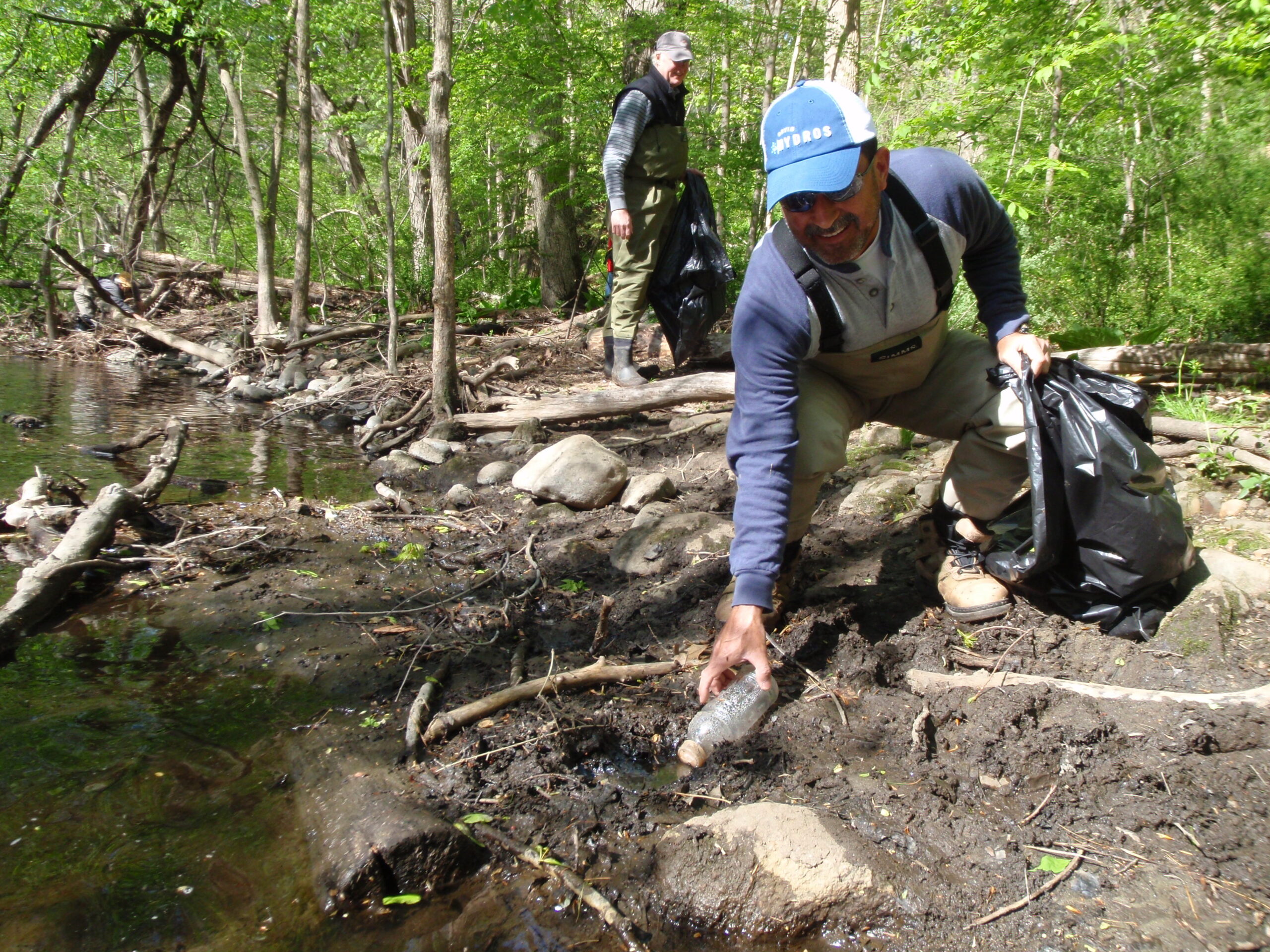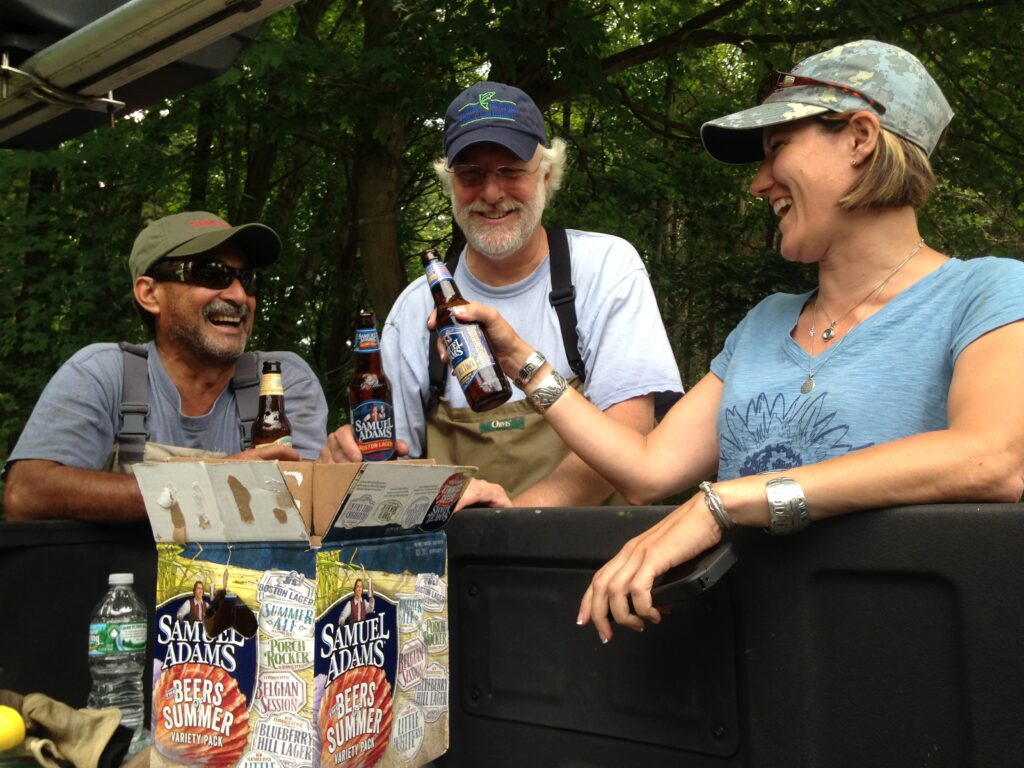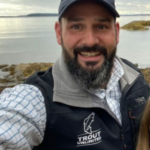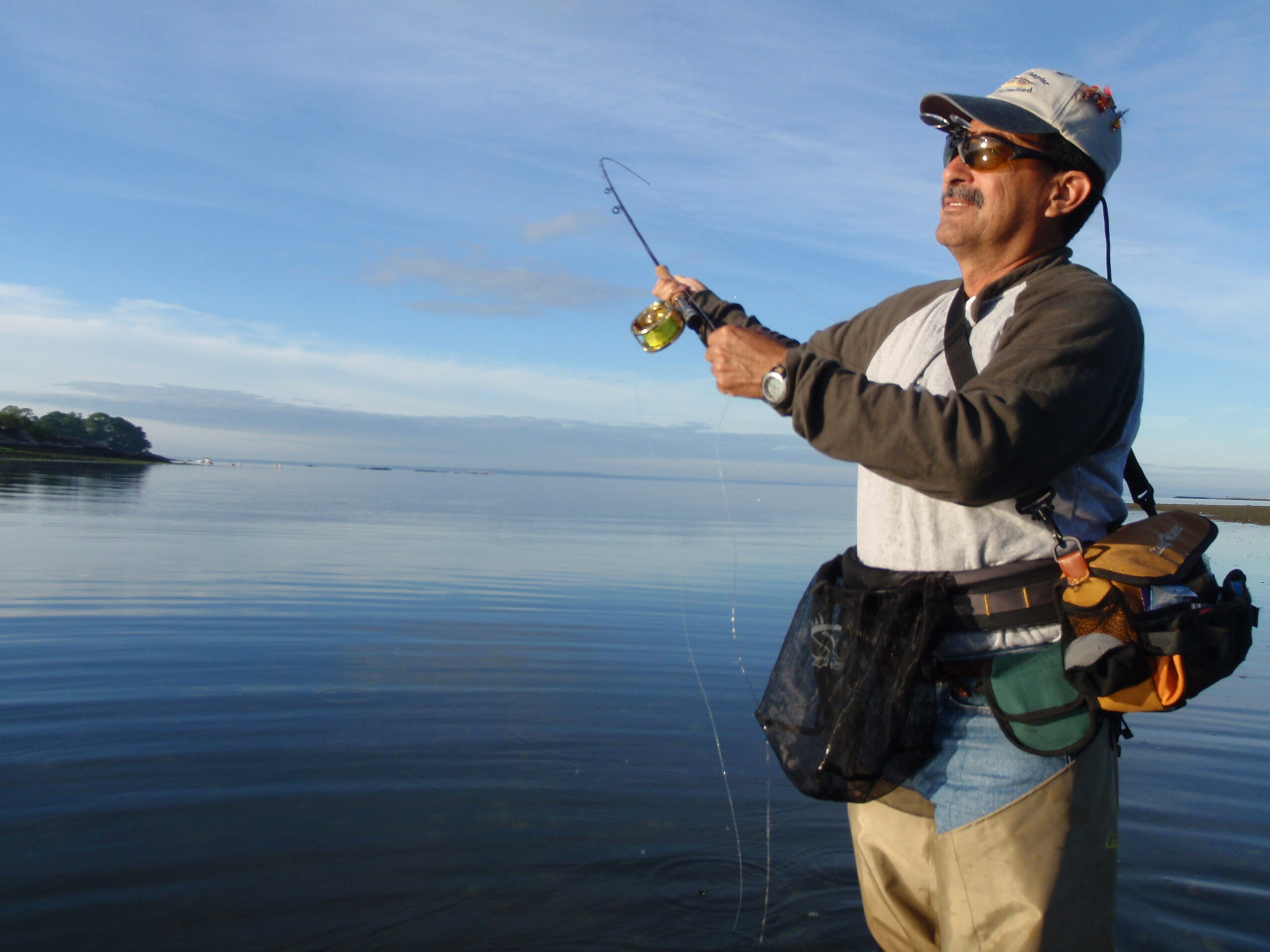We care about clean water, healthy fisheries and vibrant communities. We roll up our sleeves to volunteer, we sit on our boards, and we strategize as members and leaders of staff. We want you to join us. For a discounted first-time membership, click here: https://gifts.tu.org/we-are-tu
The aim of this blog series is to highlight our friends, in hopes of making many new friends of broad stripes. In this series you’ll meet people of diverse communities – our good ideas, what we have in common, and where we differ. Know someone we should feature? Nominate them here.
Since it’s not possible to sit down and have coffee or spend an afternoon on the river to show you what we’re up to, a blog post will have to do. As you read, we hope you’ll consider joining us. We need your ideas to help make a bigger impact.
Together, we’ll help protect the special places we love.
Gustavo is one of the most active volunteers on the board of the Mianus Chapter of Trout Unlimited in Connecticut. Whether it’s a trash cleanup, tree planting, in-stream habitat project, youth education event, family fishing day or fly tying clinic – in person or on Zoom – Gustavo is the first to arrive and the last to leave as a volunteer. His nomination called him “the ‘behind-the-scenes’ hero of our local conservation and community-building work.” We couldn’t agree more.
In keeping with our ongoing equity practice, and in recognition of Latino Conservation Week this July 18-26, the “We Are TU” series is focusing more directly on the need to foster a more equitable, diverse and inclusive fishing and conservation community. We have updated the questions as such. Gustavo was willing to give us his perspective on his history with fly fishing and conservation, as well as how the lack of diversity and language barriers have impacted him. We are grateful for his willingness to share his perspectives on these topics, as well as for his time and talents. If we are to protect, conserve and restore our rivers and streams, we will need all voices at the table and all hands on deck.
Introducing Gustavo Castano:
Where are you from and where do you live? Born in Colombia, South America. Live in Stamford, Conn.
What is your history with conservation? I have been helping TU conservation efforts for 20 years. Taking care of our rivers and woods is the biggest challenge. We have to love them because they mean LIFE!
I had to work really hard to learn flyfishing when I didn’t speak any English. I didn’t understand what other people were telling me, how to cast, about the equipment, trying to understand instructions on how to tie flies.
Gustavo Castano, Mianus Chapter of Trout Unlimited
What is your history with fly fishing? I have been fishing since I was 3 or 4 years old. I learned to fly-fish 22 years ago in a night class near my home.

How has the lack of diversity in fishing and conservation impacted you? I think there are two main things. (a) Is the price of equipment, not many people like me can afford those prices; (b). Is the language barrier. I had to work really hard to learn flyfishing when I didn’t speak any English. I didn’t understand what other people were telling me, how to cast, about the equipment, trying to understand instructions on how to tie flies. So I had to teach myself, because I have fishing in my heart – it is a passion for me.
At first, I was intimidated in the TU meetings and at restoration work but with Dan Kieffaber, who took the fly fishing class with me, I got more comfortable. So I got into the group and started meeting people like Tony Hill, Butch (Milton Buchta), Jeff and Tom Yates etc… The rest is history.
I was intimidated in the TU meetings and at restoration work but… I got into the group and started meeting people… The rest is history.
I think having TU kids and family events in parks in cities is great, having fishing and flyfishing 101 classes to help those who are really interested in learning get started. I was fishing on a local river recently and saw a Brazilian guy struggling to cast so I taught him how to cast and gave some advice. I offered him help in the future and told him about TU and how its a great community to become part of to learn and to give back.
What does ‘giving back’ mean to you? Giving back means saying thanks for everything we have been receiving from the rivers. We have to do our part for the rivers, to protect the banks and improve the water through the restoration we do.
One thing that I have seen that is awesome in conservation is that you get all kinds of people kids, women and men working with one idea in mind to help the rivers and trout. And every day are more people from different backgrounds.

What do you want to see in the future of Trout Unlimited or in conservation? More catch and release fishing and trout management areas everywhere.
Why Trout Unlimited? Because TU means a lot for trout and to healthy rivers, and at the end that means better fishing for all of us!



